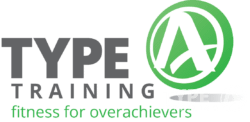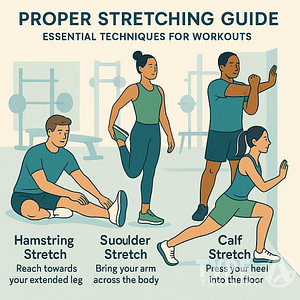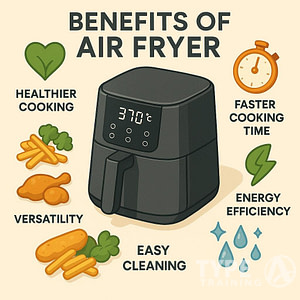Wellness encompasses more than just physical health. It’s a holistic approach to living that integrates multiple aspects of your life. The 8 Pillars of Wellness provide a framework for achieving balance and fulfillment across various dimensions of well-being.
By focusing on these pillars, you can create a comprehensive strategy for improving your quality of life and overall health. Each pillar represents a crucial area that contributes to your total wellness, from physical fitness and emotional stability to financial security and environmental consciousness.
Exploring these pillars can help you identify areas where you’re thriving and those that may need more attention. This balanced approach allows you to nurture all aspects of your life, leading to greater satisfaction and resilience in the face of life’s challenges.
Key Takeaways
- Wellness involves multiple interconnected dimensions of life
- Balancing all pillars leads to improved overall well-being
- Regular self-assessment helps identify areas for personal growth
Understanding Wellness
Popular posts:
Wellness encompasses multiple aspects of your life that contribute to your overall health and well-being. It goes beyond just physical health to include mental, emotional, and social factors.
Dimensions of Wellness
Wellness has several interconnected dimensions. Physical wellness involves proper nutrition, exercise, and sleep habits. Mental wellness focuses on cognitive health, learning, and creativity. Emotional wellness relates to managing stress, expressing feelings, and maintaining positive relationships.
Social wellness centers on building connections and engaging with your community. Spiritual wellness involves finding meaning and purpose in life. Occupational wellness relates to job satisfaction and work-life balance. Environmental wellness considers your interaction with nature and surroundings.
Financial wellness involves managing your resources effectively. Each dimension plays a crucial role in your overall well-being.
Holistic Health Concept
Holistic health views you as a whole person, not just a collection of symptoms. This approach recognizes that all aspects of your life are interconnected and influence your health. It emphasizes prevention and addresses root causes rather than just treating symptoms.
In holistic health, you’re an active participant in your wellness journey. This may involve combining conventional medicine with complementary therapies. Holistic practices often include lifestyle changes, stress reduction techniques, and natural remedies.
The goal is to achieve balance in all areas of your life. This integrated approach can lead to improved overall health and a greater sense of well-being.
Physical Wellness
Physical wellness forms the foundation for overall health and vitality. It encompasses the habits and choices that affect your body’s functioning and longevity.
Key Components
Physical wellness relies on regular exercise, proper nutrition, and adequate sleep. Aim for at least 150 minutes of moderate-intensity aerobic activity or 75 minutes of vigorous-intensity activity per week. Incorporate strength training exercises twice a week to maintain muscle mass and bone density.
A balanced diet rich in fruits, vegetables, whole grains, and lean proteins provides essential nutrients. Limit processed foods, sugary drinks, and excessive alcohol consumption.
Prioritize 7-9 hours of quality sleep nightly. Establish a consistent sleep schedule and create a relaxing bedtime routine to improve sleep quality.
Enhancing Physical Health
Regular health check-ups and screenings are crucial for early detection and prevention of chronic illnesses. Stay up-to-date with vaccinations and dental visits.
Develop healthy habits like staying hydrated, practicing good hygiene, and managing stress through relaxation techniques or meditation.
Avoid smoking and limit exposure to environmental toxins. Protect your skin from sun damage by using sunscreen and protective clothing.
Engage in activities you enjoy to make physical wellness sustainable. Try new sports, join fitness classes, or explore outdoor activities to keep your routine interesting and motivating.
Emotional Wellness
Emotional wellness involves understanding and managing your feelings effectively. It’s a key component of overall health that impacts your relationships, decision-making, and quality of life.
Understanding Emotions
Emotions are complex psychological states that arise in response to various stimuli. They can be positive or negative, intense or mild. You experience emotions like joy, anger, fear, and sadness as natural reactions to life events.
Recognizing your emotions is the first step towards emotional wellness. Pay attention to how you feel throughout the day. Notice physical sensations associated with different emotions, such as a racing heart when anxious or relaxed muscles when content.
Accepting your emotions without judgment is crucial. Remember, all feelings are valid, even if they’re uncomfortable. Avoiding or suppressing emotions can lead to long-term mental health issues.
Building Emotional Intelligence
Emotional intelligence is the ability to identify, understand, and manage your own emotions while also recognizing and influencing the emotions of others. It’s a skill you can develop with practice.
Start by enhancing your self-awareness. Reflect on your emotional responses to different situations. Ask yourself why you react the way you do. This introspection helps you understand your emotional patterns and triggers.
Practice mindfulness to stay present and attuned to your feelings. Take a few minutes each day to sit quietly and observe your thoughts and emotions without trying to change them.
Develop stress management techniques to build resilience. Deep breathing, progressive muscle relaxation, and regular exercise can help you cope with challenging emotions.
Empathy is another key aspect of emotional intelligence. Try to see situations from others’ perspectives. This skill improves your relationships and communication abilities.
Intellectual Wellness
Intellectual wellness involves expanding your knowledge and skills through ongoing learning and creative activities. It contributes to personal growth and can enhance job satisfaction.
Cognitive Growth
Engaging in mentally stimulating activities sharpens your cognitive abilities. Read books on diverse topics to broaden your perspectives. Try puzzles or strategy games to challenge your problem-solving skills. Learn a new language to exercise your memory and improve communication abilities.
Take up a creative hobby like painting or writing to stimulate your imagination. Attend lectures or workshops in fields outside your expertise. This exposure to new ideas can spark innovative thinking in your personal and professional life.
Lifelong Learning
Embrace continuous education to stay intellectually active throughout your life. Set personal learning goals and pursue them consistently. Enroll in online courses or attend local classes to acquire new skills or deepen existing knowledge.
Stay updated with current events and technological advancements. Engage in thought-provoking discussions with peers to exchange ideas and gain fresh perspectives. Consider mentoring others to reinforce your own understanding while helping others grow.
Explore different career development opportunities within your field. This can lead to increased job satisfaction and personal fulfillment. Remember, intellectual growth is a lifelong journey that enriches your experiences and enhances your overall well-being.
Spiritual Wellness
Spiritual wellness involves finding meaning, purpose, and connection in life. It encompasses beliefs, values, and practices that provide a sense of inner peace and fulfillment.
Inner Peace and Purpose
Cultivating spiritual wellness starts with self-reflection. Take time to explore your personal values and beliefs. What gives your life meaning? What principles guide your decisions?
Mindfulness practices can help you connect with your inner self. Try meditation or deep breathing exercises to quiet your mind and increase self-awareness.
Set aside moments for gratitude. Reflect on what you’re thankful for each day. This simple practice can shift your perspective and increase your sense of purpose.
Consider journaling to explore your thoughts and feelings. Writing can help you process experiences and gain clarity about your spiritual path.
Practices and Beliefs
Engage in activities that align with your spiritual beliefs. This might include prayer, attending religious services, or participating in spiritual retreats.
Spend time in nature to feel connected to something larger than yourself. Many find peace and inspiration in natural settings.
Practice compassion and kindness towards others. Acts of service can provide a sense of purpose and strengthen your spiritual well-being.
Explore different spiritual traditions through reading or discussions with others. You may find new perspectives that resonate with you.
Consider joining a spiritual community that shares your values. Group practices and support can enhance your spiritual growth.
Environmental Wellness
Environmental wellness encompasses the health of our surroundings and our impact on the planet. It involves creating spaces that promote well-being and making choices that support ecological balance.
Sustainable Living
Sustainable living is key to environmental wellness. You can reduce your carbon footprint by choosing energy-efficient appliances and vehicles. Opt for renewable energy sources like solar panels when possible. Minimize waste by recycling, composting, and using reusable products.
Consider your food choices carefully. Eat locally-sourced, organic produce to support sustainable agriculture. Reduce meat consumption, as livestock farming contributes significantly to greenhouse gas emissions.
Conserve water by fixing leaks promptly and using water-saving fixtures. Choose eco-friendly transportation options like walking, cycling, or public transit when feasible.
Personal Surroundings
Your immediate environment plays a crucial role in your well-being. Create a living space that promotes relaxation and productivity. Declutter regularly to reduce stress and improve focus.
Incorporate natural elements into your home and workspace. Add plants to improve air quality and boost mood. Maximize natural light to enhance vitamin D absorption and regulate sleep patterns.
Minimize exposure to toxins by using natural cleaning products and air purifiers. Choose furniture and decor made from sustainable materials to reduce indoor air pollution.
Organize your space to support work-life balance. Designate areas for work, relaxation, and hobbies to maintain boundaries and reduce stress.
Financial Wellness
Financial wellness forms a crucial pillar of overall well-being. It encompasses your ability to manage money effectively, plan for the future, and achieve financial goals.
Economic Stability
Economic stability involves creating a solid financial foundation. Start by setting clear financial goals for the short and long term. Develop a budget to track your income and expenses. This will help you identify areas where you can cut costs and increase savings.
Build an emergency fund to cover unexpected expenses. Aim for 3-6 months of living expenses saved in an easily accessible account. This safety net can provide peace of mind and protect you from financial shocks.
Invest wisely for your future. Consider diversifying your investments across different asset classes to manage risk. Regularly review and adjust your investment strategy as your financial situation changes.
Managing Financial Stress
Financial stress can take a toll on your mental and physical health. To reduce this stress, focus on what you can control. Create a debt repayment plan if you have outstanding balances. Prioritize high-interest debts first to minimize interest charges.
Educate yourself about personal finance. Understanding financial concepts can boost your confidence in making money decisions. Consider seeking advice from a financial professional for complex financial matters.
Practice mindful spending. Before making purchases, ask yourself if the item aligns with your financial goals. Look for ways to enjoy life without overspending, such as finding free or low-cost activities in your community.
Communicate openly with your partner or family about money matters. Regular financial discussions can help prevent misunderstandings and align your financial goals.
Social Wellness
Social wellness involves cultivating meaningful relationships and fostering a sense of belonging. It’s about creating connections that enrich your life and support your overall well-being.
Building Community
Joining local groups or clubs can expand your social circle. Look for organizations aligned with your interests, such as
Engage in activities that promote social interaction. Try hosting a potluck dinner or organizing a game night with neighbors. These gatherings provide opportunities to connect and build lasting friendships.
Consider using social media mindfully to stay in touch with distant friends and family. Share updates, exchange messages, and plan virtual meetups to maintain connections across distances.
Fostering Connections
Prioritize quality time with loved ones. Schedule regular catch-ups with friends and family, even if it’s just a quick coffee or phone call. These interactions can boost your mood and provide emotional support.
Practice active listening to strengthen your relationships. Give your full attention when others speak, ask thoughtful questions, and show empathy. This helps build trust and deepen your connections.
Be open to vulnerability in your relationships. Share your thoughts and feelings with trusted individuals. This openness can lead to more authentic and supportive social bonds.
Seek out opportunities for collaboration at work or in your community. Working together on projects can foster teamwork and create new social connections.
Occupational Wellness
Occupational wellness involves finding fulfillment and balance in your work life. It encompasses job satisfaction, career growth, and maintaining a healthy work environment.
Career Satisfaction
Finding a career that aligns with your values and interests is crucial for occupational wellness. Reflect on your skills and passions to identify roles that excite you. Set clear career goals and work towards them consistently.
Consider seeking professional development opportunities to enhance your skills and stay competitive in your field. Networking can open doors to new possibilities and provide valuable insights into different career paths.
If you’re feeling unfulfilled in your current role, explore options for career advancement or transition. Don’t be afraid to pursue additional education or training to support your career aspirations.
Workplace Well-being
Creating a positive work environment contributes significantly to your overall wellness. Establish healthy boundaries between work and personal life to avoid burnout. Learn to manage stress through techniques like deep breathing or short breaks.
Cultivate positive relationships with colleagues to foster a supportive atmosphere. Effective communication is key to resolving conflicts and collaborating successfully.
Prioritize ergonomics in your workspace to prevent physical strain. Take regular breaks to stretch and move throughout the day. If possible, incorporate standing or walking meetings to reduce sedentary time.
Advocate for workplace policies that promote well-being, such as flexible hours or wellness programs. Participate in team-building activities to strengthen connections with coworkers and improve job satisfaction.
Nourishing the Body and Mind
Proper nutrition and adequate rest are essential for your overall wellness. These elements work together to support your physical health and mental wellbeing.
Importance of Nutrition
A balanced diet provides the fuel your body needs to function optimally. Focus on consuming a variety of fruits, vegetables, whole grains, lean proteins, and healthy fats. These foods supply vital nutrients that support your immune system and energy levels.
Hydration is equally crucial. Aim to drink 8-10 glasses of water daily to maintain proper bodily functions.
Consider keeping a food journal to track your eating habits. This can help you identify areas for improvement and ensure you’re meeting your nutritional needs.
Role of Sleep and Relaxation
Quality sleep is vital for your physical and mental restoration. Aim for 7-9 hours of sleep each night to support cognitive function and emotional regulation.
Establish a consistent sleep schedule and create a relaxing bedtime routine. This might include reading, gentle stretching, or meditation.
Incorporate relaxation techniques into your daily life. Try deep breathing exercises or progressive muscle relaxation to reduce stress and promote calmness.
Regular self-care practices, such as taking baths or engaging in hobbies, can significantly improve your mental health and overall sense of wellbeing.
Self-improvement and Personal Development
Self-improvement and personal development are essential components of overall wellness. They involve continuous learning, self-reflection, and taking intentional steps to enhance your life and well-being.
Self-acceptance and Growth
Self-acceptance forms the foundation for personal growth. Embrace your strengths and weaknesses without judgment. Recognize that you are worthy of love and respect, regardless of perceived flaws or past mistakes.
Practice self-compassion by treating yourself with kindness and understanding. This mindset shift allows you to approach challenges as opportunities for growth rather than threats to your self-worth.
Set realistic goals aligned with your values and aspirations. Break them down into manageable steps, celebrating small victories along the way. This approach builds confidence and motivation for continued progress.
Invest in lifelong learning through reading, courses, or new experiences. Expanding your knowledge and skills contributes to personal fulfillment and opens doors to new opportunities.
Building Resilience
Resilience is the ability to bounce back from adversity and adapt to change. It’s a crucial skill for maintaining mental wellness in the face of life’s challenges.
Develop a growth mindset by viewing setbacks as learning experiences. Reframe negative self-talk into more constructive and supportive inner dialogue.
Practice mindfulness to stay present and manage stress effectively. Regular meditation or deep breathing exercises can help cultivate emotional stability and mental clarity.
Build a strong support network of friends, family, or mentors. Surround yourself with people who encourage your growth and provide emotional support during difficult times.
Prioritize self-care activities that rejuvenate your mind and body. This includes regular exercise, adequate sleep, and engaging in hobbies you enjoy.
Frequently Asked Questions
The 8 pillars of wellness cover essential aspects of health and well-being. They provide a framework for improving quality of life and achieving balance.
What are the key components of each of the 8 pillars of wellness?
Physical wellness involves regular exercise, proper nutrition, and adequate sleep. Mental wellness focuses on cognitive function, learning, and creativity.
Emotional wellness encompasses managing feelings and maintaining positive relationships. Social wellness involves connecting with others and building a support network.
Spiritual wellness relates to finding purpose and meaning in life. Occupational wellness emphasizes job satisfaction and work-life balance.
Environmental wellness concerns your surroundings and their impact on health. Financial wellness involves managing money and achieving financial stability.
How can one incorporate the pillars of wellness into daily life?
Start by setting small, achievable goals for each pillar. Create a daily routine that includes time for exercise, meditation, and social activities.
Prioritize healthy eating and getting enough sleep. Make time for hobbies and activities that bring you joy and fulfillment.
Regularly assess your progress and adjust your strategies as needed. Seek support from friends, family, or professionals when facing challenges.
What role does emotional wellness play within the 8 pillars of wellness?
Emotional wellness influences all other aspects of well-being. It affects how you handle stress, make decisions, and interact with others.
Practicing emotional wellness can improve your relationships and work performance. It helps you develop resilience and cope with life’s challenges more effectively.
Emotional wellness techniques include mindfulness, journaling, and seeking therapy when needed.
What are examples of activities that support physical wellness in the context of the 8 pillars?
Regular aerobic exercise like walking, swimming, or cycling improves cardiovascular health. Strength training helps maintain muscle mass and bone density.
Yoga and stretching enhance flexibility and balance. Proper nutrition includes eating a balanced diet with plenty of fruits and vegetables.
Getting 7-9 hours of sleep per night supports overall physical health. Regular health check-ups and preventive care are also essential for physical wellness.
In what ways do the 8 pillars of wellness interact with one another?
Improvements in one pillar often positively impact others. For example, regular exercise can boost both physical and mental health.
Strong social connections can enhance emotional and spiritual wellness. Financial stability can reduce stress, benefiting mental and emotional health.
A healthy work environment supports both occupational and environmental wellness. Balancing all pillars creates a synergistic effect on overall well-being.
How can businesses or organizations implement the 8 pillars of wellness for employee health?
Offer wellness programs that address all 8 pillars. Provide gym memberships or on-site fitness facilities to support physical wellness.
Implement flexible work schedules to promote work-life balance. Offer mental health resources and stress management workshops.
Create spaces for relaxation and social interaction in the workplace. Provide financial planning resources and fair compensation packages.
Encourage community involvement and volunteering opportunities. Ensure a safe and healthy work environment that supports environmental wellness.

















